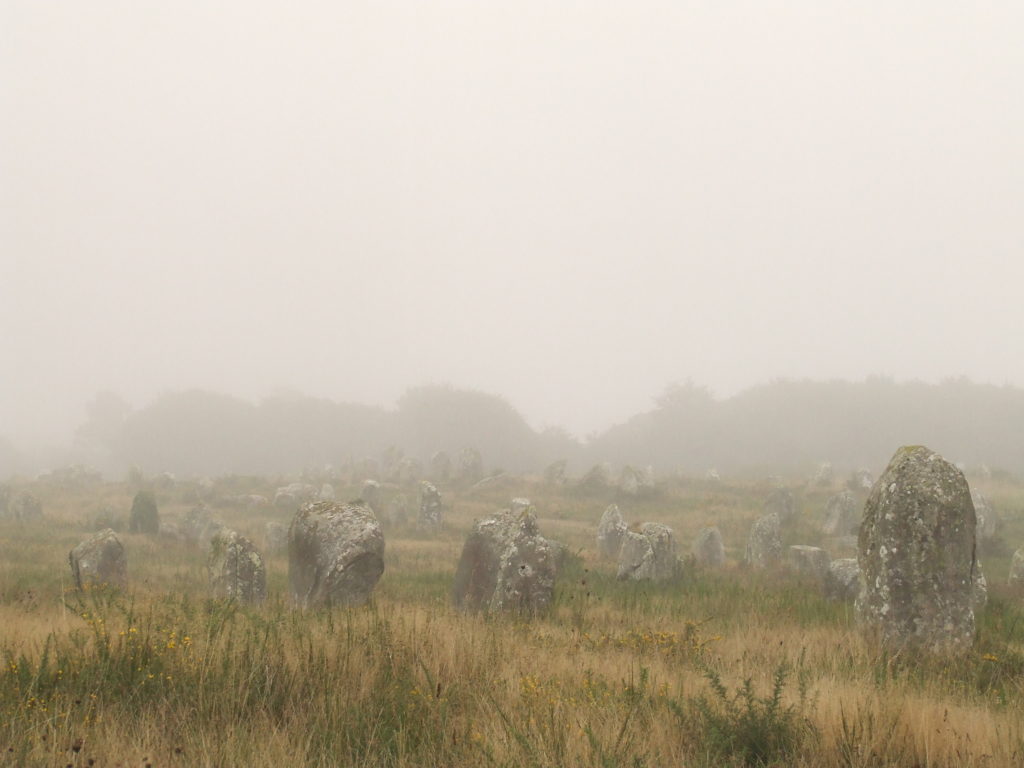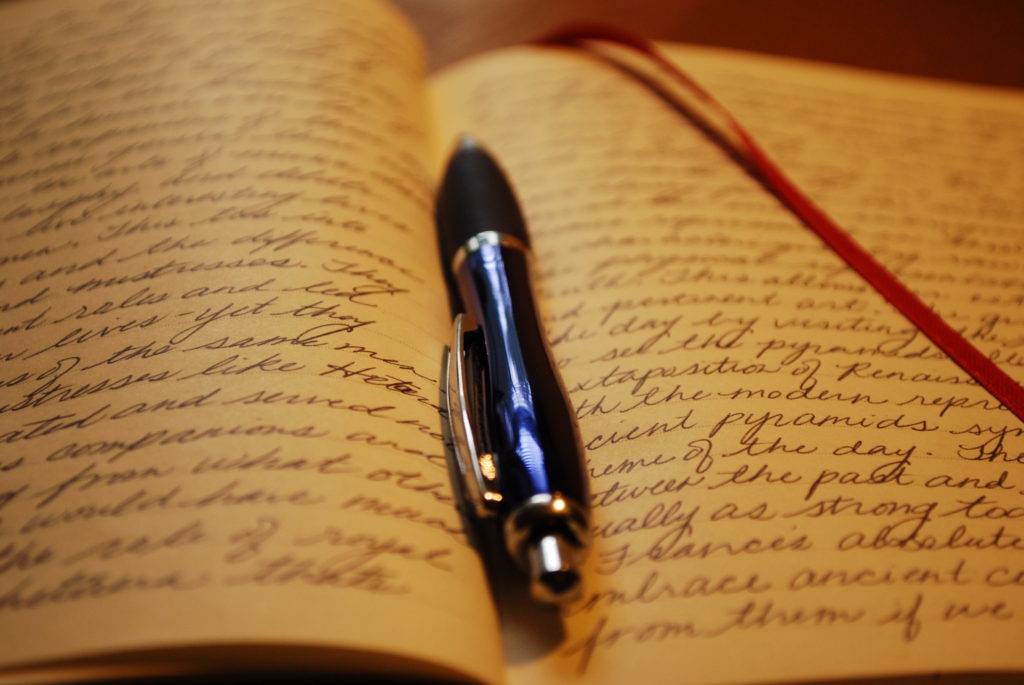We arrive early in the morning, while the mist from the sea is still floating in among the long rows of stones. We can barely see the tops of the trees through the fog. The sky is a dull, opaque gray that blocks out the sun. It is eerily beautiful.
Everything is covered in a thin layer of dew and the air is chilly, chillier than I expected. I wrap myself in the only extra piece of clothing I brought: a red and gold scarf that clashes with my rose-colored shorts and teal sneakers.
No one knows exactly why the stones are standing here or what purpose they served. A local legend, dating back hundreds of years to the Celtic past of the region, tells of Roman soldiers turned to stone by the wizard Merlin.
In my childhood, I was captivated by Celtic stories of priestesses, fertility rites, and the struggle between the feminine spirituality of pagan traditions and the patriarchal religion of Christianity. Stories set in wild forests, on mystical islands, and in big craggy castles enthralled me. Now standing in a field of mysterious stone formations on the Breton coast, I feel like I am walking through those enchanted tales.
This is Brittany. Stretching out into the Atlantic in northwestern France, Brittany, or Breizh, is one of the six Celtic nations, where Celtic languages continue to be spoken. Its distinct cultural heritage dates back to the early medieval era. We have visited our beloved France before: strolled the cobblestone streets of Paris, rode bicycles through vineyards of Chardonnay and Syrah, basked in the sun of the French Riviera. This is a different France, earthy and untamed.
Here I stand, on the southern shores of Brittany, on the Gulf of Morbihan, in a town called Carnac, known for its Neolithic menhir, or standing stones. There are thousands of stones, dating back thousands of years. Some in long rows, some stacked to form tombs and burial chambers, and others just standing alone, towering, keeping solemn w atch, marking time as centuries go by.
atch, marking time as centuries go by.
The Ménec alignments are eleven rows of stones standing in a grassy field, and that’s where my husband and I wander on this misty morning. At the western end of the field, the stones rise up way above our heads. My husband pretends to hold up a large stone that is tilted toward the ground and I laugh. As we walk along the rows, the stones get smaller and smaller, as if sinking into the soft soil below. At the eastern end, they are barely two feet high.
Later in the afternoon, we walk past a copse of trees, thin spindles of wood, partially covered in lichen, ivy vines snaking up the trunks. The light is ethereal and golden, breaking through the leaves and flooding the area. It feels otherworldly. Even the air feels different, cool but weighty. It is easy to see how legends of wizards and Druids, priestesses and sorceresses came about in this misty place.
And it calls us to slow and observe, to wonder and wander around these stones that stand guard, these trees that cast spells. It invites us to graze our fingers along the rough edges of stones who have stood on this ground for thousands of years. Go ahead, ask your questions of us and we will tell you all that we have seen.
The stones hold secrets and the trees offer communion and the cool, damp mist coming in from the sea cloaks it all in a mystical magic I had never seen before. We are walking through the present, but also through the past. We are out in the open, but also within the close quarters of ancient whispers.
Here, I am connected with the past, entrenched in it. The history isn’t on display in a museum, kept safely behind glass. It is here, where I can reach out and touch, where I can wander inside it, where I feel the pull of time transporting me back through the centuries. And it leaves me with the incredible impression of magic and legend and secrets, all tucked into the beautiful seashores of northwestern France.
* * * * *
 Jamie Y. Watkins is a wife, sister, daughter, and friend. She works at a non-profit by day and goes to school at night, trying her best to find times to write in between. Her biggest passions are travel–France in particular– film, and good conversation. She lives in New Jersey, where she and her husband open their house to others with good food and wine. She blogs at Seek.Follow.Love about wrestling with faith and church, looking for meaning in the every day, and feeling her way through life. Twitter: @jamieywatkins Facebook: @jywatkinswriter
Jamie Y. Watkins is a wife, sister, daughter, and friend. She works at a non-profit by day and goes to school at night, trying her best to find times to write in between. Her biggest passions are travel–France in particular– film, and good conversation. She lives in New Jersey, where she and her husband open their house to others with good food and wine. She blogs at Seek.Follow.Love about wrestling with faith and church, looking for meaning in the every day, and feeling her way through life. Twitter: @jamieywatkins Facebook: @jywatkinswriter

